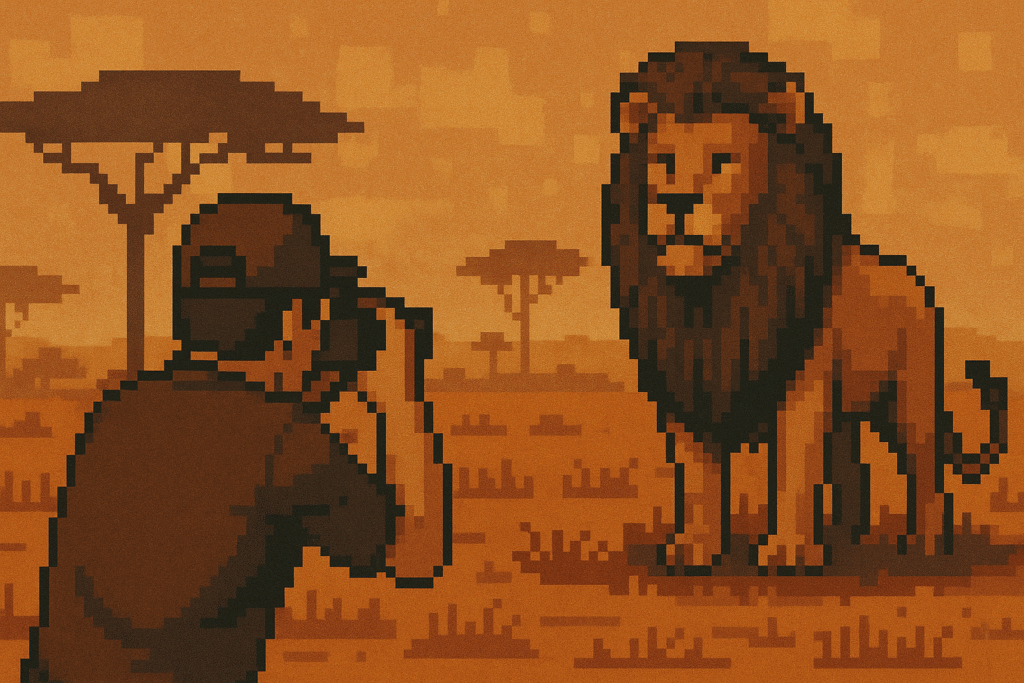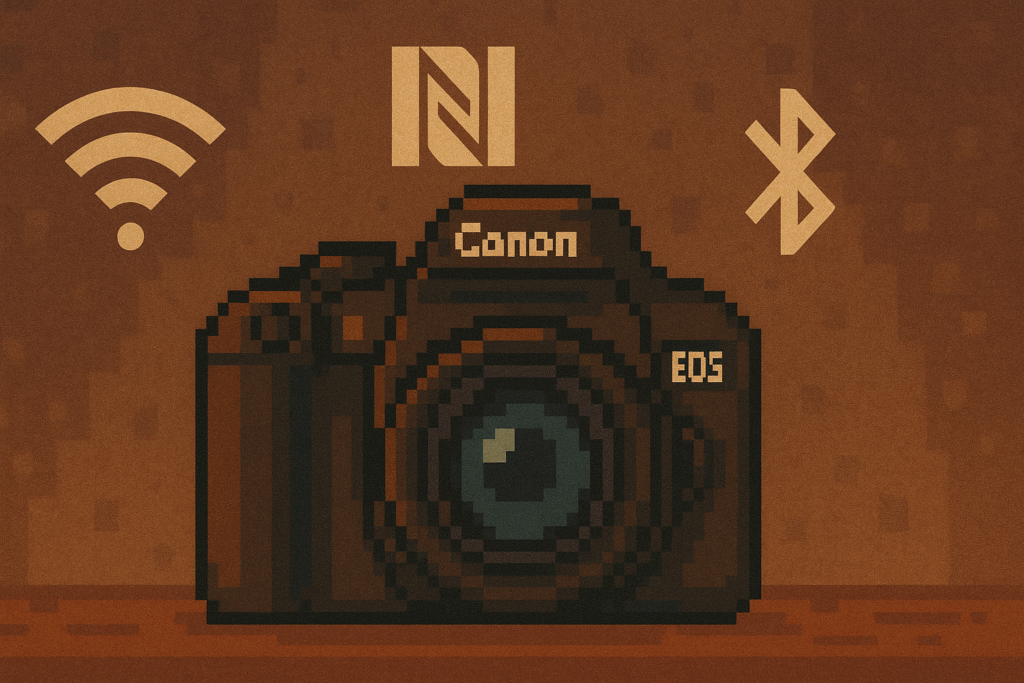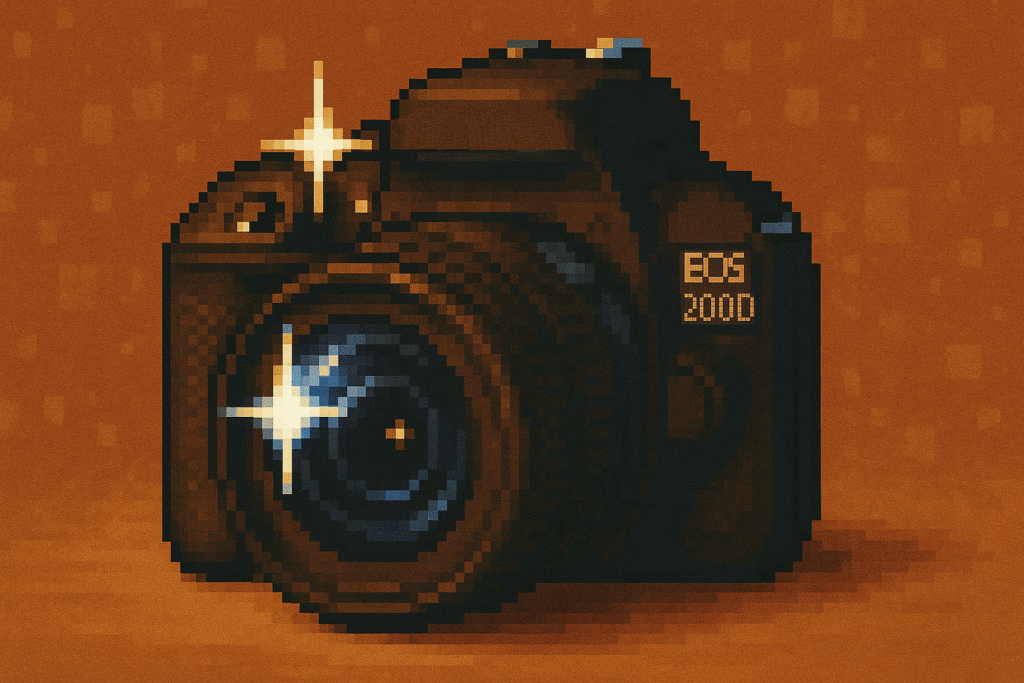Reading time: 7 min
Let’s get one thing straight: cameras today are overcompensating. Every brand is in an arms race for who can cram the most useless features into a body. 8K video nobody needs, animal-eye detection so advanced it could probably autofocus on Bigfoot, and AI menus that feel like you’re negotiating with HAL 9000 just to change ISO.
But the Canon EOS 200D (Rebel SL2 in the US, Kiss X9 in Japan) doesn’t care about that circus. Released in 2017, this thing came out when fidget spinners were still cool. People dismissed it as an “entry-level DSLR,” the kind of thing you buy for your cousin who’s suddenly “into photography.”
Except here’s the twist: it aged like fine whiskey. Not only does it still hold up, but it also delivers something modern cameras sometimes forget — soul.
First Impressions: The Camera That Feels Like a Camera

Pick up the 200D, and it’s like shaking hands with an old friend. Compact, light (453g with battery), but not flimsy. The grip feels good in your hand, the dials click in that satisfyingly mechanical way, and when you fire the shutter, it sounds like a camera, not a muted robot cough.
Unlike newer cameras that try too hard to be minimalistic slabs, the 200D is unapologetically a DSLR. It has presence. It has character. It has that “I’m here to take photos, not double as a Netflix streaming stick” energy.
It doesn’t scream “future tech.” It whispers, “Relax. Focus. Shoot.” And in a world of hyper-spec madness, that whisper is loud enough.
The Sensor: APS-C but Mighty
Under the hood, you’re looking at a 24.2-megapixel APS-C CMOS sensor paired with Canon’s DIGIC 7 processor. Translation: sharp, vibrant, and forgiving files that make even your mediocre shots look halfway decent.
Sure, full-frame snobs will scoff. But unless you’re zooming in to count the pores on someone’s nose or trying to crop the entire solar system into a frame, you’re not missing much. The 200D churns out RAW files that are flexible, edit-friendly, and way better than people give it credit for.
And the best part? The sensor is paired with Dual Pixel CMOS AF — Canon’s magical autofocus tech that actually works. Smooth, accurate, reliable. Unlike the 2000D’s prehistoric AF system, the 200D’s Dual Pixel AF makes shooting in live view or video almost fun.
Video: Yes, It Can Do 60fps
Let’s set the record straight:
Full HD (1080p) up to 60fps — buttery smooth.
Also gives you 24, 25, and 30fps if you want a more cinematic vibe.
720p at 50/60fps for those who want slow motion but don’t mind potato resolution.
No, it doesn’t do 4K. And no, it doesn’t need to. Because let’s be honest — half the people who scream “but does it do 4K??” are the same ones uploading 480p clips of their cat to Instagram stories.
The 200D’s 1080p60 is more than enough for vlogs, casual filmmaking, or capturing that embarrassing moment when your friend trips over a tent peg at camp. And unlike a lot of entry-level DSLRs, it actually looks clean.
Screen Envy: Fully Articulating Touchscreen
Here’s where the 200D feels ahead of its time: that 3-inch fully articulating touchscreen.
Flip it, twist it, tap it. Want to vlog? Done. Want to shoot low-angle photos without lying on the floor like a weirdo? Easy. Need to poke focus points with your finger like you’re playing Fruit Ninja? Go for it.
It’s touch-enabled, bright, and intuitive. And trust me, once you’ve used a Canon articulating screen, going back to a fixed LCD feels like being punished.
Autofocus: Simple but Effective

Yes, the 200D technically has only 9 AF points in the viewfinder, with one lonely cross-type in the center. On paper, that sounds ancient. But pair it with Canon’s Dual Pixel AF in live view, and suddenly the story changes.
Tap the screen, and it focuses exactly where you want it. Smooth subject tracking. Reliable face detection. It’s not going to chase squirrels like an R6, but it doesn’t need to. For most people — portraits, travel, daily use — it nails focus just fine.
Performance: Surprisingly Snappy
5fps burst shooting — not sports-camera fast, but respectable. You’re not going to nail a football match, but your dog shaking water off his fur? You’ll catch it.
ISO range of 100-25,600 (expandable to 51,200) — decent in low light. Don’t expect miracles, but it holds up surprisingly well.
Battery life around 650 shots on a full charge — meaning you’ll die of exhaustion before the camera dies of power loss.
Basically, it’s quick enough to feel modern without being intimidating.
The Lens Buffet: Endless Options

The EF/EF-S mount is Canon’s gift to humanity. We’re talking decades of glass at your disposal — everything from bargain-bin plastic 50mm primes to L-series beasts that cost more than your rent.
And because the mirrorless hype train is causing a DSLR lens sell-off, you can score amazing deals second-hand. Want creamy bokeh for portraits? Grab the nifty fifty. Want reach for wildlife? The 70-300mm is dirt cheap these days.
The 200D might be a small body, but slap a solid lens on it and suddenly it feels like you’re wielding a much more expensive camera.
Connectivity: Canon Joins the 21st Century

For once, Canon didn’t totally ignore the modern world. The 200D comes with Wi-Fi, NFC, and Bluetooth.
Translation: you can transfer your shots to your phone without juggling SD cards like it’s 2009. You can also remote-control the camera from your phone, which is fantastic for group shots — or spying on your cat when you set it up on a tripod.
Who the 200D is For
Beginners who don’t want to feel like idiots: The guided interface actually teaches you settings without sounding condescending.
Vloggers and casual video shooters: That articulating touchscreen + 1080p60 combo is a dream at this price point.
Travelers: It’s compact and lightweight, but still delivers DSLR quality.
Budget shooters: It’s cheap, and lenses are cheaper. You’ll spend more on coffee this year than upgrading your glass.
Seasoned photographers who want a backup: Throw it in your bag, use it as a backup body, or lend it to your kid. It’ll keep going.
Where It Shows Its Age
Okay, let’s not sugarcoat it. The 200D isn’t perfect.
No 4K. If you’re obsessed with pixel peeping, look elsewhere.
9 AF points in the viewfinder feels prehistoric.
Plastic body — don’t use it as a hammer.
Rolling shutter in video if you pan like a caffeinated squirrel.
But here’s the thing: all of these so-called flaws remind you to slow down. To shoot with intention. To actually learn the craft instead of leaning on the camera’s AI.
Real-World Use: Why It’s Still Relevant

Take it out camping. Strap it on a cheap tripod. Record your off-road adventures, or snap portraits of your friends when the light hits just right. The 200D doesn’t make you worry about babying it like a $3,000 flagship. It’s rugged enough to throw in a bag, light enough to carry all day, and reliable enough to make you forget it’s “entry-level.”
I’ve seen people ditch these in favor of mirrorless setups costing 10x more, and you know what? Their photos don’t look 10x better. Often, they look the same — because skill matters more than gear.
Final Thoughts: Old but Glorious
Here’s the truth: the Canon EOS 200D doesn’t try to be everything. It doesn’t chase 8K. It doesn’t pretend to be a cinema rig. It doesn’t care about flexing specs.
What it does do is deliver consistently great photos, reliable video at 1080p60, and a shooting experience that actually feels fun. It’s compact, affordable, and timeless in its own way.
Is it old? Sure.
Is it glorious? Absolutely.
If you want a camera that teaches you the craft while still giving you modern conveniences, the Canon EOS 200D is the sweet spot. It’s the bridge between “I just want good pictures” and “I’m not ready to remortgage my house for a mirrorless monster.”
So yeah, laugh at the specs if you want. But hand a 200D to someone who knows what they’re doing, and they’ll wipe the floor with any phone shooter flexing their latest cinematic mode.
Because at the end of the day, photography isn’t about specs. It’s about moments. And the Canon EOS 200D still captures them beautifully.
Old. But Glorious.
Hey! Wanna check other tech stuff I talked about? Go right here: Tech Blogs

